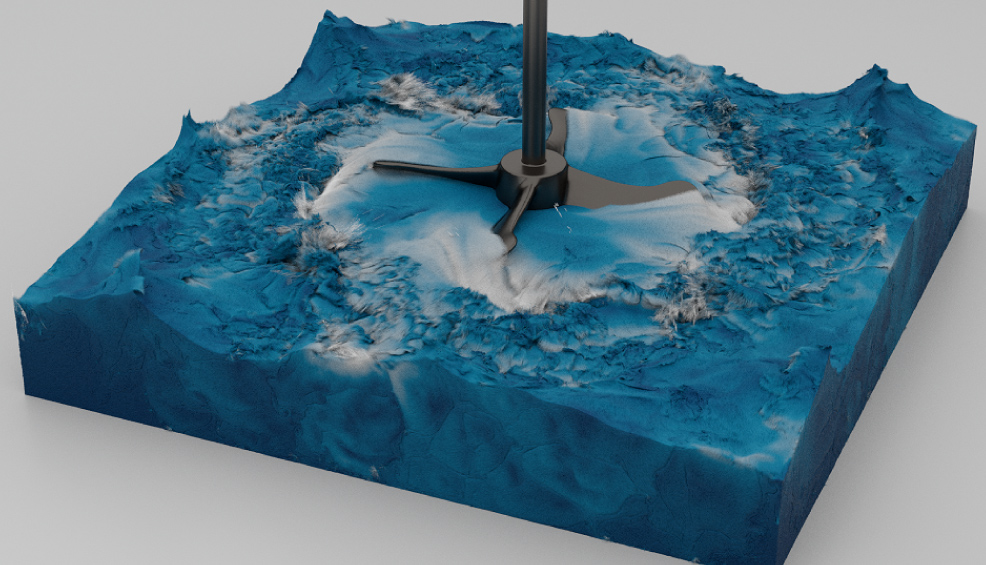
12th September 2022 Efficient simulation of 1 billion particles By redesigning how fluids are simulated, researchers have demonstrated an order of magnitude speed increase on the previous state-of-the-art for slow-flowing viscous liquids.
Modelling the behaviour of liquids is important for a wide range of applications, from industrial processes and medical devices to computer graphics and visual simulations. However, despite many years of development and known physics dating back over 100 years, the ability to accurately simulate liquid flow remains one of the most computationally challenging aspects of creating digital replicas of the real world. This is because the flow and behaviour of liquids is determined by both the pressure distribution through the liquid and, in the case of thick viscous liquids, the pressure-dependent internal resistance to that flow. Precisely calculating these complex and time-varying distributions is very computationally intensive, and so many optimisation schemes have been developed to speed up this calculation process at the expense of accuracy. Now, researchers at the King Abdullah University of Science and Technology (KAUST) in Thuwal, Saudi Arabia, have made a significant breakthrough in computational speed for viscous liquids, by combining efficient mathematics with low-level parallel computational capabilities in modern computer processors.
"The simulation of fluid dynamics has been an evergreen topic in computer graphics research for many years, and the existing methods still have much potential for performance improvement," said Han Shao, a PhD candidate at KAUST's Visual Computing Center. "In this research, we propose the Unsmoothed Aggregation Algebraic Multigrid method as a sophisticated multigrid framework, which fully utilises modern CPU features and introduces new numerical methods." Shao's team started with the idea that more efficient mathematical methods could be used for the fundamental matrix-vector calculations needed to compute the pressure distribution through the liquid, as well as simplifying the calculation of trivial values at the fluid boundary. Essentially, they showed that when many values in the matrices are the same – as is the case in the bulk of a viscous liquid – a single calculation can be used across many elements allowing many calculations to be skipped. The team then harnessed the synergy of combining their efficient matrix-vector calculation code with the single instruction multiple data (SIMD) capability of modern CPUs, which allows the same operation to be applied to many data inputs at the same time. This enabled them to construct a modelling approach that could simulate viscous fluids with a billion particles up to 15 times faster than the current state of the art (the Houdini physics engine). In other words, a scene that once had to be left running overnight can now be fully rendered in only an hour or so. "Our framework can be used immediately by industrial users for faster simulation, using the code available on our project website," added Shao.
Comments »
If you enjoyed this article, please consider sharing it:
|








